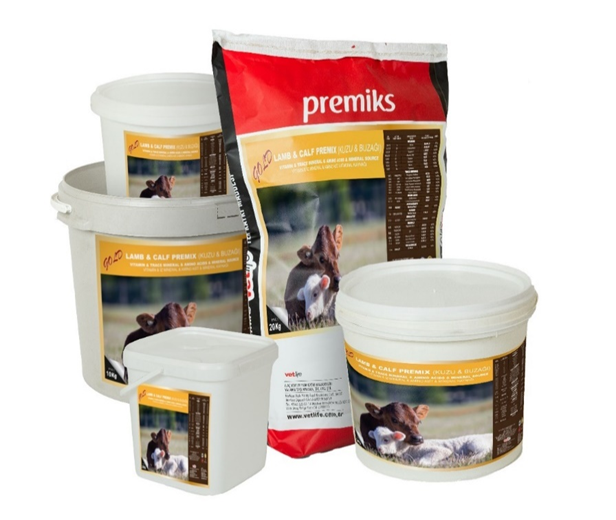GOLD LAMB&CALF PREMIX
Gold LAMB&CALF Premix is designed to meet the nutritional needs of young ruminants during their transition from milk feeding to adolescence. The developmental stages of their stomach structures, liver functions, and bone growth are quite different from those of adult ruminants. Although they start to show interest in feed materials shortly after birth, this premix is meticulously formulated to support their growth.It contains vitamins AD3E and B group vitamins that are designed to accelerate growth, support the immune system, and enhance overall development without burdening the liver. The trace minerals and other essential minerals are particularly supportive of growth spurts and development. As the lambs and calves approach weaning and begin to adapt to feed materials, this premix, with its easily digestible carbohydrates, plays a crucial role in promoting growth and development.
The Gold Premix group is created to provide the necessary vitamins, minerals, and amino acids for high-performance animal breeds. Natural feeding alone may not suffice for achieving optimal performance in cultured breeds, which is why high-energy and high-protein concentrates are preferred. The attainment of targeted performance relies on the presence of components such as enzymes and hormones in the digestive system, as well as in meat, milk, offspring, wool, or fiber. When used with a good feed ration, Gold premixes are designed to supply all required vitamins, minerals, and amino acids for the desired performance. Vitamins and trace minerals, particularly those active in enzyme and hormone structures, are carefully selected based on academic research and included in the composition. These products, used for many years, are continuously updated in light of new scientific developments.


